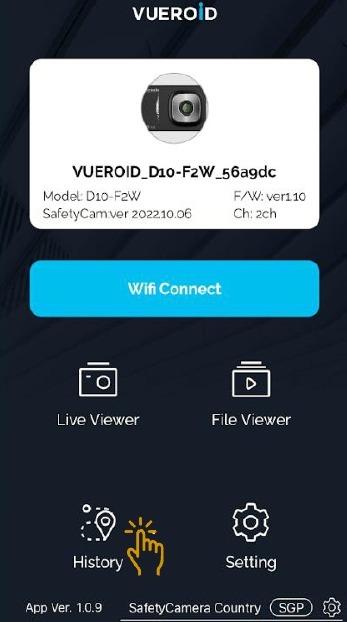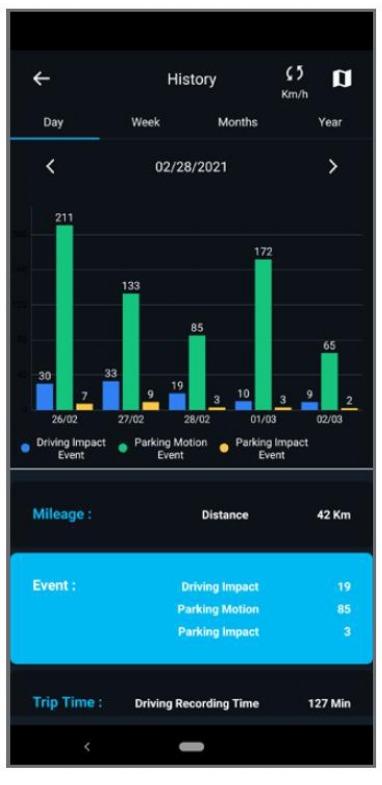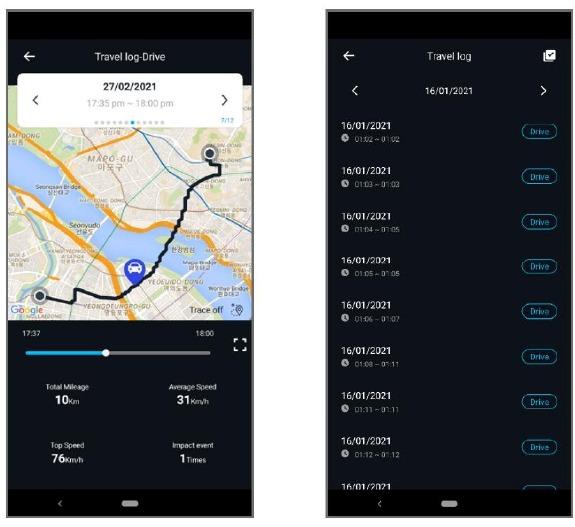Using Vueroid D10-F2W - Wi-Fi Application Manual - (Applicable ONLY with Optional Add-On Wi-Fi Dongle)
VUEROID WI-FI APPLICATION APPS
Table of Contents
- VUEROID WI-FI APPLICATION APPS
- 1.0 APP DOWNLOAD AND INSTALLING
- 2.0 SETTING
- 2.1 Live Viewer
- 2.2 Safety Camera Alert
- 2.3 Advanced Driver- Assistance System (ADAS) Setting
- 2.4 Vueroid Dashcam Setting - Recording
- 2.5 Vueroid Dashcam Setting - Event
- 2.6 Vueroid Dashcam Setting - Sound
- 2.7 Vueroid Dashcam Setting - Time
- 2.8 Vueroid Dashcam Setting - Memory
- 2.9 Vueroid Dashcam Setting - System
- 3.0 VIEW THE RECORDING (FILE VIEWER)
- 4.0 DOWNLOADING VIDEOS
- 5.0 HISTORY
1.0 APP DOWNLOAD AND INSTALLING
1.1 App Store Download

-
Search for "Vueroid" and download the app.
-
For Android users, please download the app from "Google Play".
-
For IOS users, please download the app from "App Store"
1.2 Wi-Fi Application Connection
- The W-Fi application is only applicable when purchase the Optional Add-On Wi-Fi Dongle.
-
Turn "ON" the Wi-Fi button on the dashcam.
-
Open Vueroid App.
-
Tap on "OK" once the pop-up screen is shown and it says "Connect to device".
-
In the Wi-Fi network listing, click on the VUEROID dashcam SSID in the form of "VUEROID_D10_F2W_XXXXXX"
-
Key in the password. Default password is "12345678"
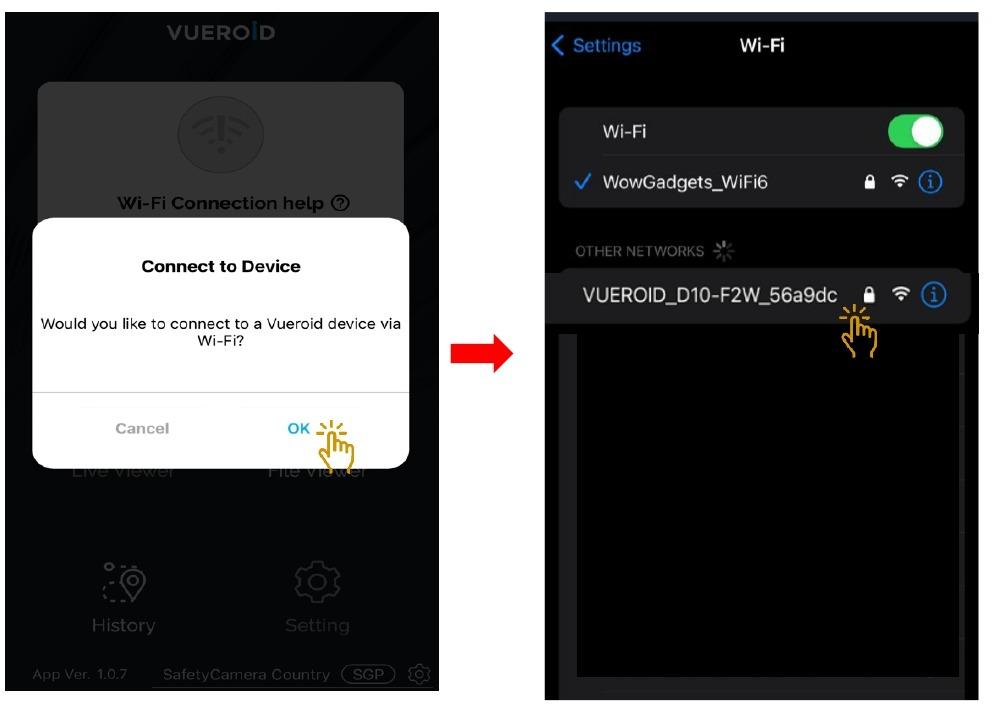
In the event unable to connect to Wi-Fi Apps, please turn off mobile data plan network or switch on airplane mode.
1.3 Wi-Fi Application Start-up Screen

-
Wi-Fi Status : Display Wi-Fi status and the name of the connected device.
-
Wi-Fi Connect : Enable or Disable Wi-Fi connection.
-
Live Viewer : View the front / rear live stream
-
File Viewer : Find the recording files in different folders
-
History : Find the trip data and travel routes by dates. (Optional - Applicable with GPS Receiver)
-
Setting : Allow user to get unit's settings switched.
2.0 SETTING
2.1 Live Viewer
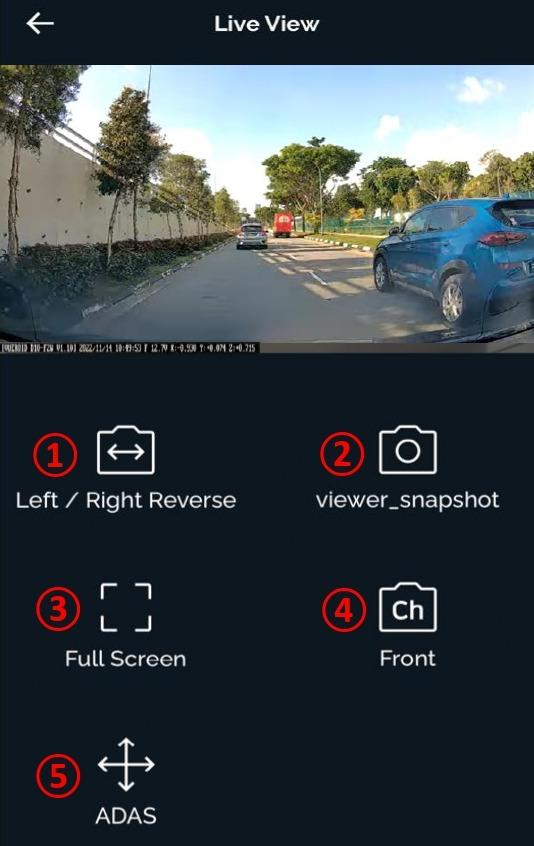
1. Left/Right Reverse : Switch to Left / Right viewing image.
2. Snapshot : Capture the display image.
3. Full Screen : Display the full screen
4. CH (Front/Rear) : Switch to Front / Rear camera image.
5. ADAS : Initialize the ADAS calibration setting. Enable or disable following functions
Front Vehicle Start Alarm (FVSA)
Forward Collision Warning System (FCWS)
Safety Camera Alert
2.2 Safety Camera Alert
The Safety Camera Alert is only applicable when purchase the Optional Add-On GPS Receiver.
2.2.1 Safety Camera Setting
1. Safety Camera Alert - When the vehicle approaches or passes the speed limit zone, the safety camera alert system will collect GPS signals and safety camera data.
2. Click on "Setting" to choose the Safety Camera Country Setting.
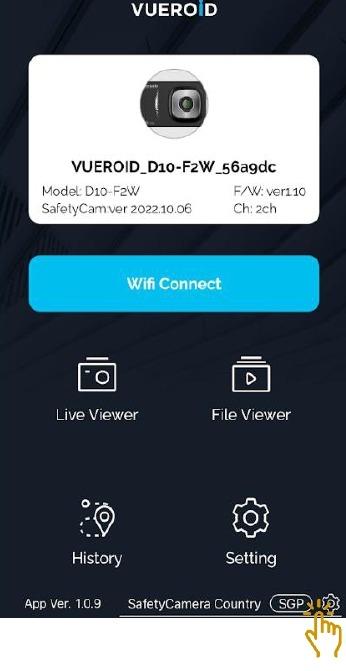 |
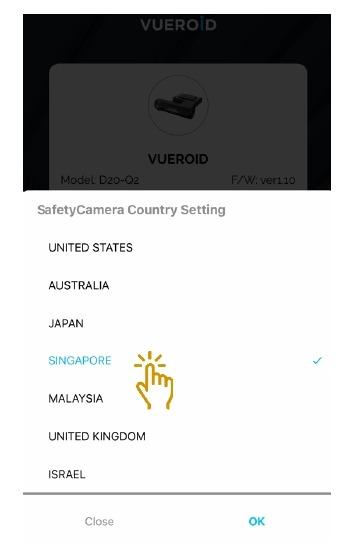 |
3. To enable or disable the safety camera alert, click on the Live Viewer
4. Click on "ADAS"
5. Click on Dashcam Setting Icon
6. To enable swipe to the right and to disable swipe to left
7. Once selected, click "OK"

2.3 Advanced Driver- Assistance System (ADAS) Setting
The ADAS is only applicable when purchase the Optional Add-On GPS Receiver.
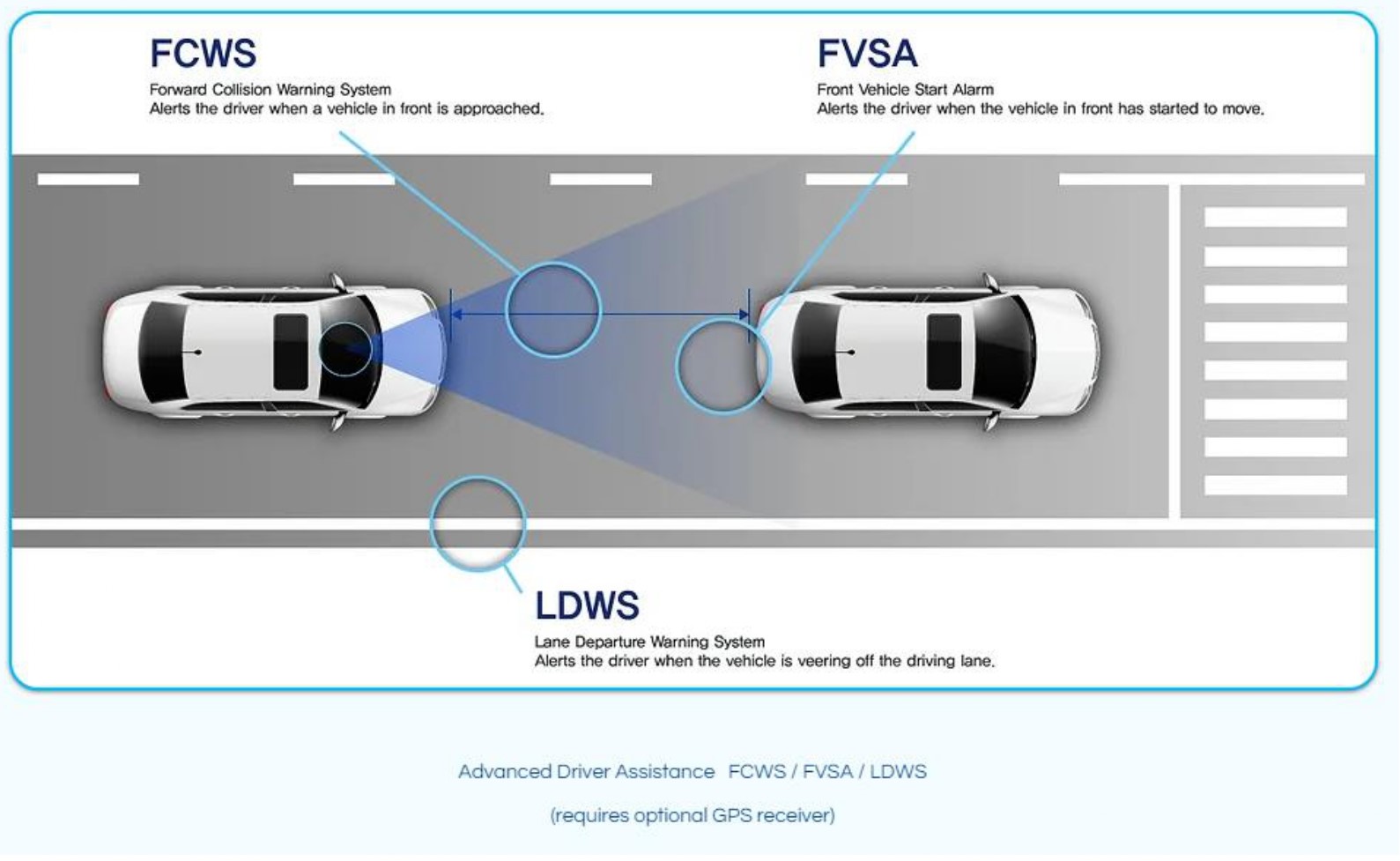
1. Advanced Driver-Assistance System (ADAS) consists of
- Lane Departure Warning System (LDWS)
- Front Vehicle Start Alarm (FVSA)
- Forward Collision Warning System (FCWS)
2. ADAS can be Enable or Disable by each function accordingly.
3. To enable or disable the safety camera alert, click on the Live Viewer
4. Click on "ADAS".
5. Click on Dashcam Setting Icon
6. To enable swipe to the right and to disable swipe to left accordingly to user preferences.
7. Once selected, click "OK"

2.3.1 Adjustment of ADAS Alignment
- Adjustment of alignment of ADAS setting can be set by moving the ADAS grid line.
- Go to Live Viewer then select ADAS setting to adjust the alignment.
- Select CH1 - Front View Live Viewer
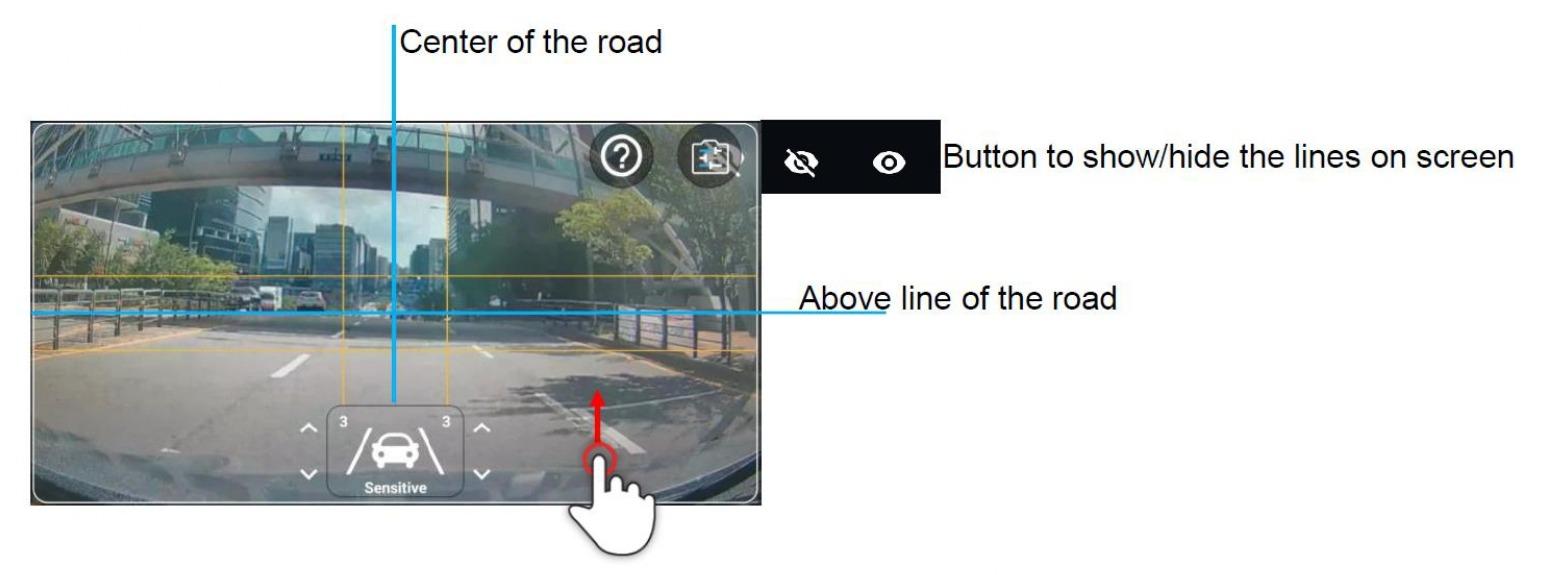
- Touch and move the screen to align the blue line displayed on the ADAS setting screen.
- Align the vertical blue line to the center of the road.
- Align the center of the road inside the vertical yellow lines.
- Align the horizon blue line to the above line of the road.
- Align the above of the road inside the vertical yellow lines.
- Press the
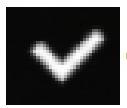 to save it.
to save it.
2.3.2 ADAS Sensor Sensitivity
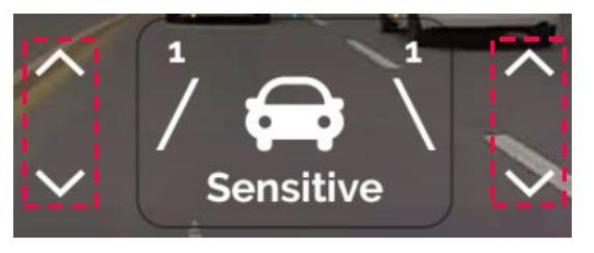
- Press Up/Down to set the warning sensitivity level 1 to level 5
- Higher the number represents higher sensitivity
2.4 Vueroid Dashcam Setting - Recording
To change the dashcam setting , click on "Setting" icon.
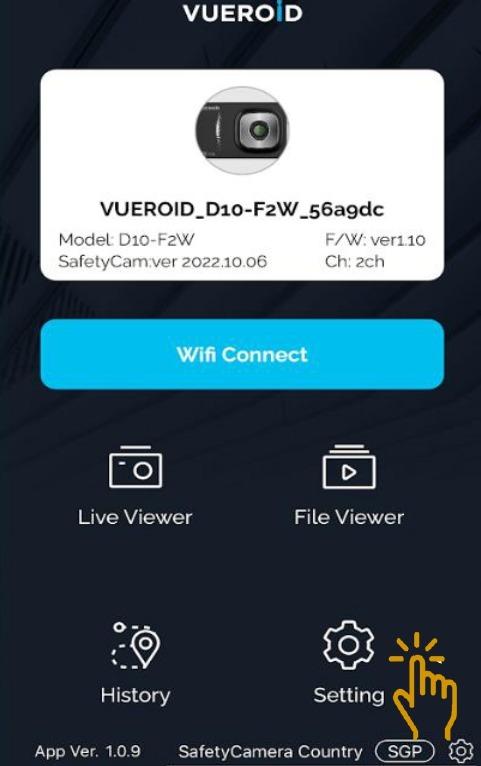
2.4.1 Recording - Image Quality
- Choose the type of "Image Quality" to be set .
- Select "HIGH" or "MID" or "LOW"
- Click "OK" once selected.
- Once saved, the dashcam will restart itself.

2.4.2 Recording - Voltage Cut Off
Voltage Cut Off allows user to choose a few pre set voltage cut off options.
The dashcam will stop recording once detected low voltage or voltage cut time (whichever comes first) during the parking mode recording.
- Click on "Voltage Cut Off" to be set.
- Select the voltage value to be set
- Click "OK" once selected.

2.4.3 Recording - Voltage Cut Time
Voltage Cut Time allows user to choose a few pre set timer cut off options or disable the timer cut off.
The dashcam will stop recording once detected low voltage or voltage cut time (whichever comes first) during the parking mode recording.
- Click on "Voltage Cut Time" to be set.
- Select the cut time to be set
- Click "OK" once selected.
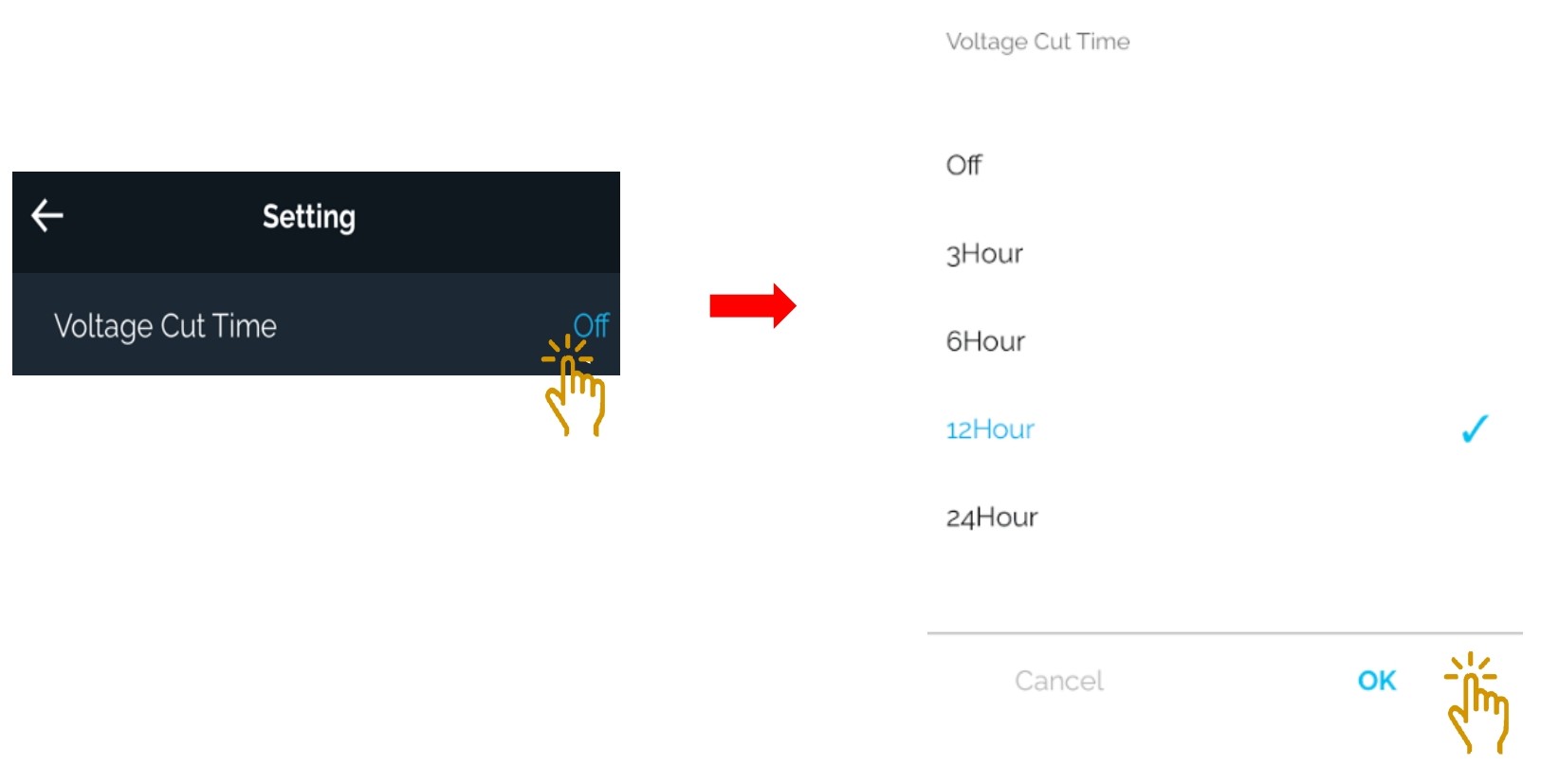
2.4.4 Recording - Parking Record
During the parking mode recording, user can choose either based on time lapse recording or recording after motion detected.
- Click on "Parking Record" to be set.
- Select "Time Lapse" or "Motion".
- Click "OK" once selected.
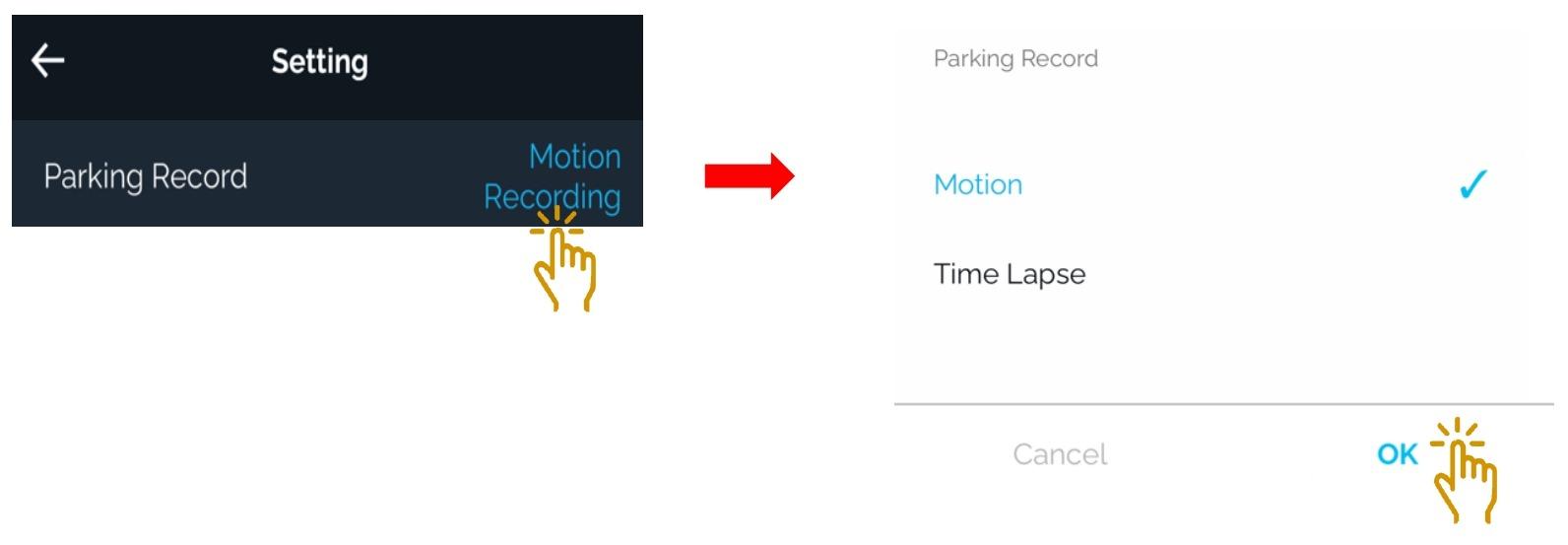
Time Lapse - 7 seconds per video file. Each video file contains 100 seconds recorded video.
Motion - 30 seconds per video file.
2.4.5 Recording - Driving Record
During the driving mode recording, user can choose either based on time lapse recording or normal recording.
- Click on "Driving Record" to be set.
- Select "Time Lapse" or "Normal".
- Click "OK" once selected.
- Once saved, the dashcam will restart itself.
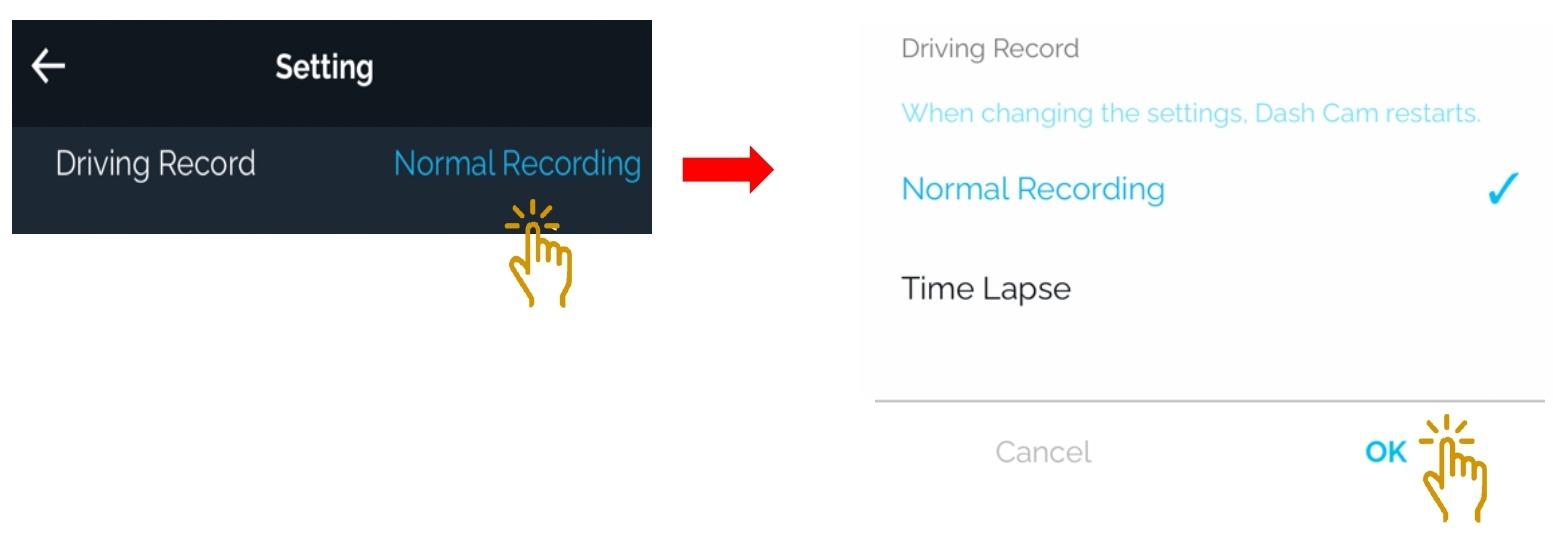
Once the Driving Record setting is switch to either one setting Normal Recording or Time Lapse Recording, the dashcam itself will auto format the SD card.
Please ensure to save out any important videos/files before to change this setting
Default setting: Normal Recording
Normal Recording - 1 minute per video file.
Time Lapse - 20 seconds per video file. Each video file contains 5 minutes of recorded video.
2.4.6 Recording - Low Power Mode
Low Power Mode enhance the dashcam's energy saving in parking mode.
Once the Low Power Mode option is activated, the dashcam will consume very low power while on standby and only start to record upon an impact.
This will help to conserve the power especially when you will be away from your car for a longer period of time.
Dashcam will not record upon any motion but only starts to record upon a strong impact. Currently, this feature is available on D10-F2W and the default setting is off.
- Click on "Low Power Mode" to be set.
- Select "ON" or "OFF".
- Click "OK" once selected.
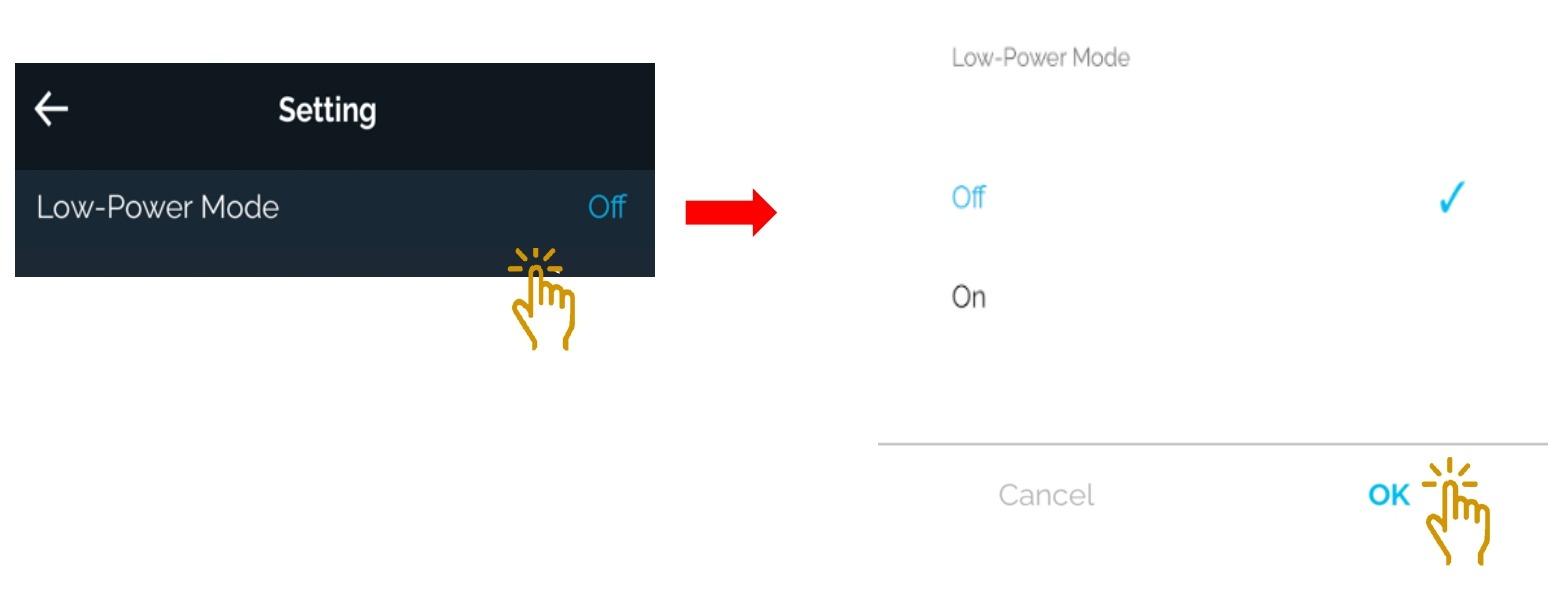
2.4.7 Recording - HDR
High Dynamic Range (HDR) improves the contrast in a video while maintaining clarity in high contrast or low-light conditions. This means the whole scene looks more like how your eyes see it.
- Click on "HDR" to be set.
- Select "ON" or "OFF".
- Click "OK" once selected.
- Once saved, the dashcam will restart itself.
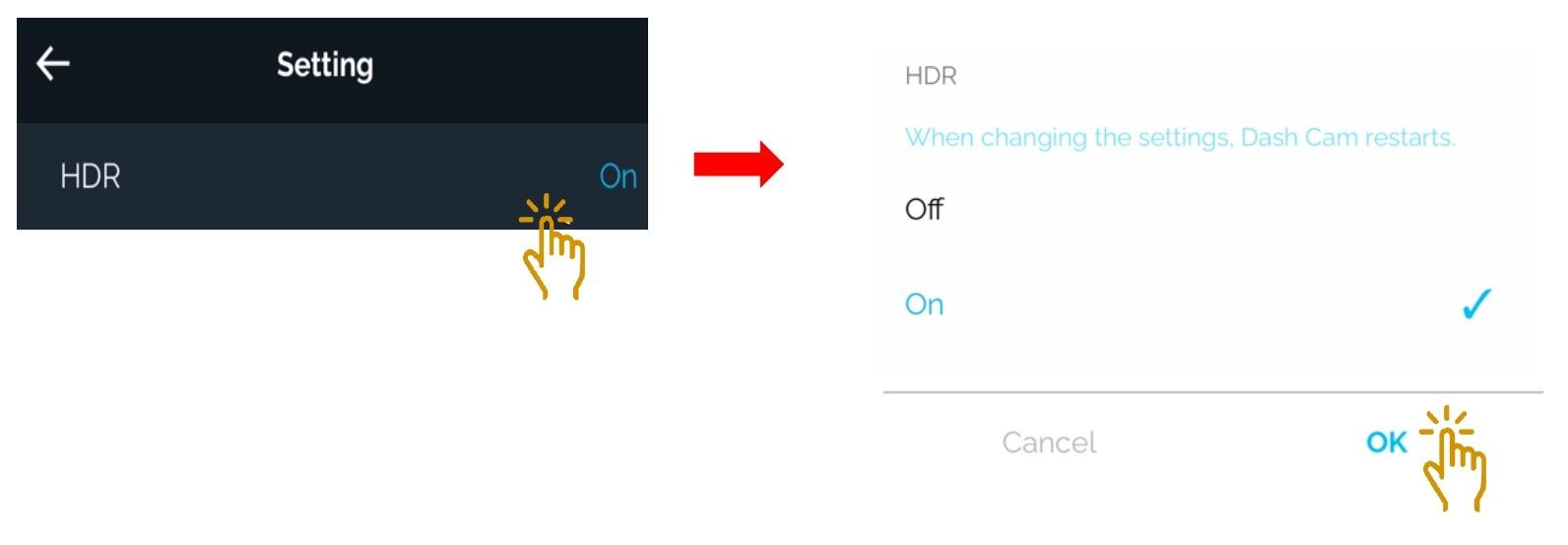
2.4.8 Recording - Parking Record with Rear
This function allows user to choose the Rear camera whether to record or not during parking mode.
- Click on "Parking Record With Rear" to be set.
- Select "ON" or "OFF".
- Click "OK" once selected.
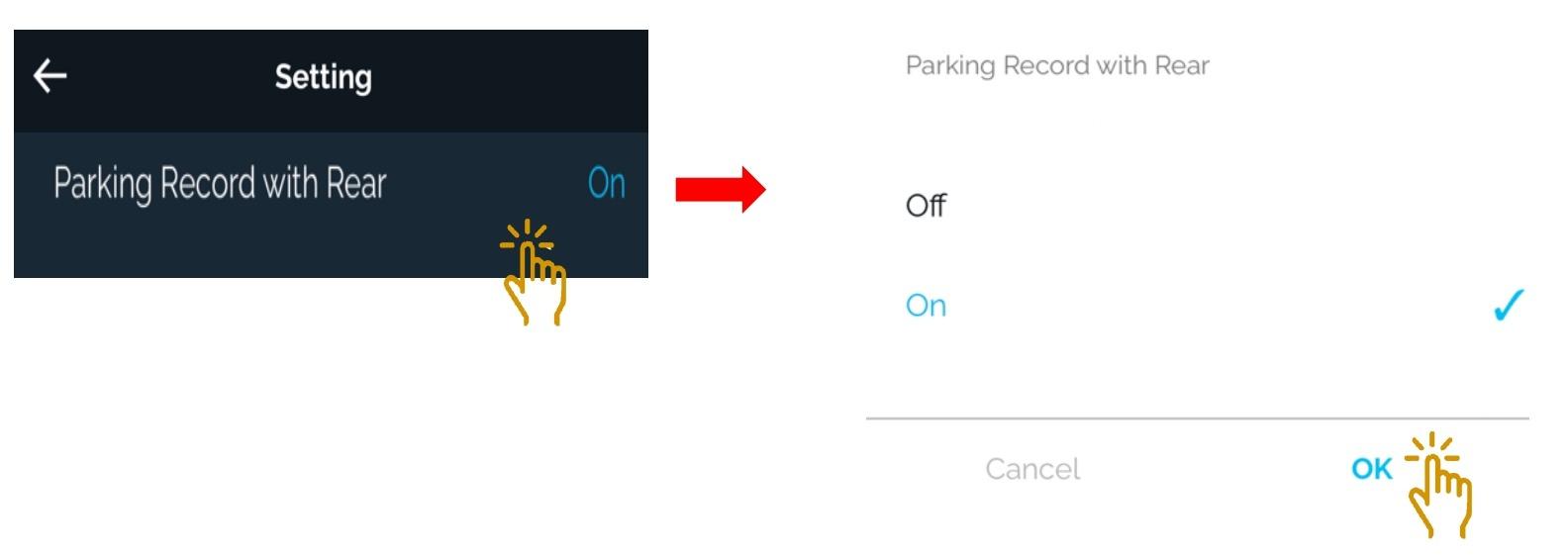
2.5 Vueroid Dashcam Setting - Event
Settings for impact and motion event sensitivity while driving and parking.
- Driving Impact Sensitivity
- Parking Impact Sensitivity
- Front Camera Motion Sensitivity
- Rear Camera Motion Sensitivity
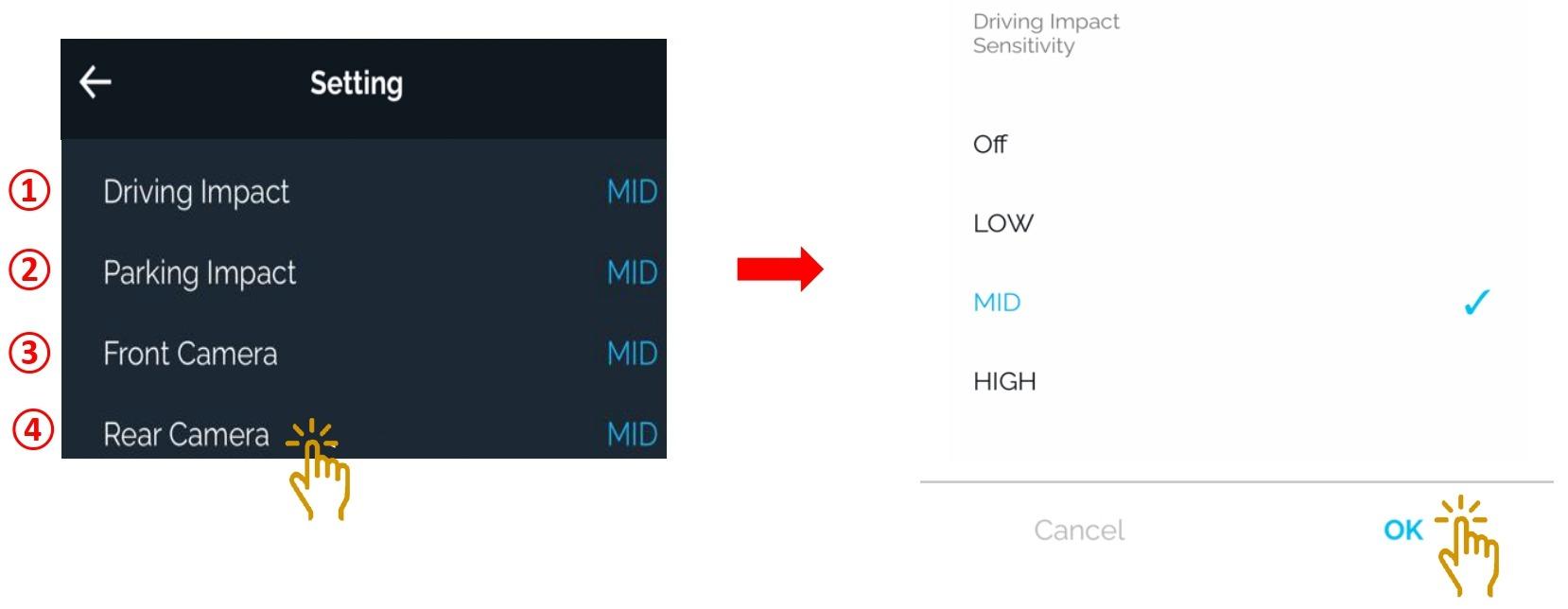
2.6 Vueroid Dashcam Setting - Sound

-
Voice recording - It can be turn on or turn off
-
Speaker Volume - Speaker volume can be adjusted accordingly or to be turn on or turn off.
-
Click "OK" once selected.
2.7 Vueroid Dashcam Setting - Time

-
Standard Time - Time setting can be set manually or choose the correct region time zone GMT.
-
Time Setting - Manual time setting
-
Click "OK" once selected.
2.8 Vueroid Dashcam Setting - Memory

1. Memory Assign - This function allows user to choose to prioritize the recorded videos in the memory card allocation.
| MEMORY ASSIGN |
Memory SD Card Capacity (32GB, 64GB, 128GB, 256GB) |
||
| Driving Memory Allocation | Parking Memory Allocation | Event Memory Allocation | |
| Driving First | 60% | 20% | 20% |
| Parking First | 30% | 50% | 20% |
| Event First | 30% | 20% | 50% |
| Driving Only | 80% | 0% | 20% |
2. SD Card Format - To format the SD Memory card.
Please note that once formatted, all the videos inside the SD card will be erased.
3. Once saved, the dashcam will restart itself.
2.9 Vueroid Dashcam Setting - System
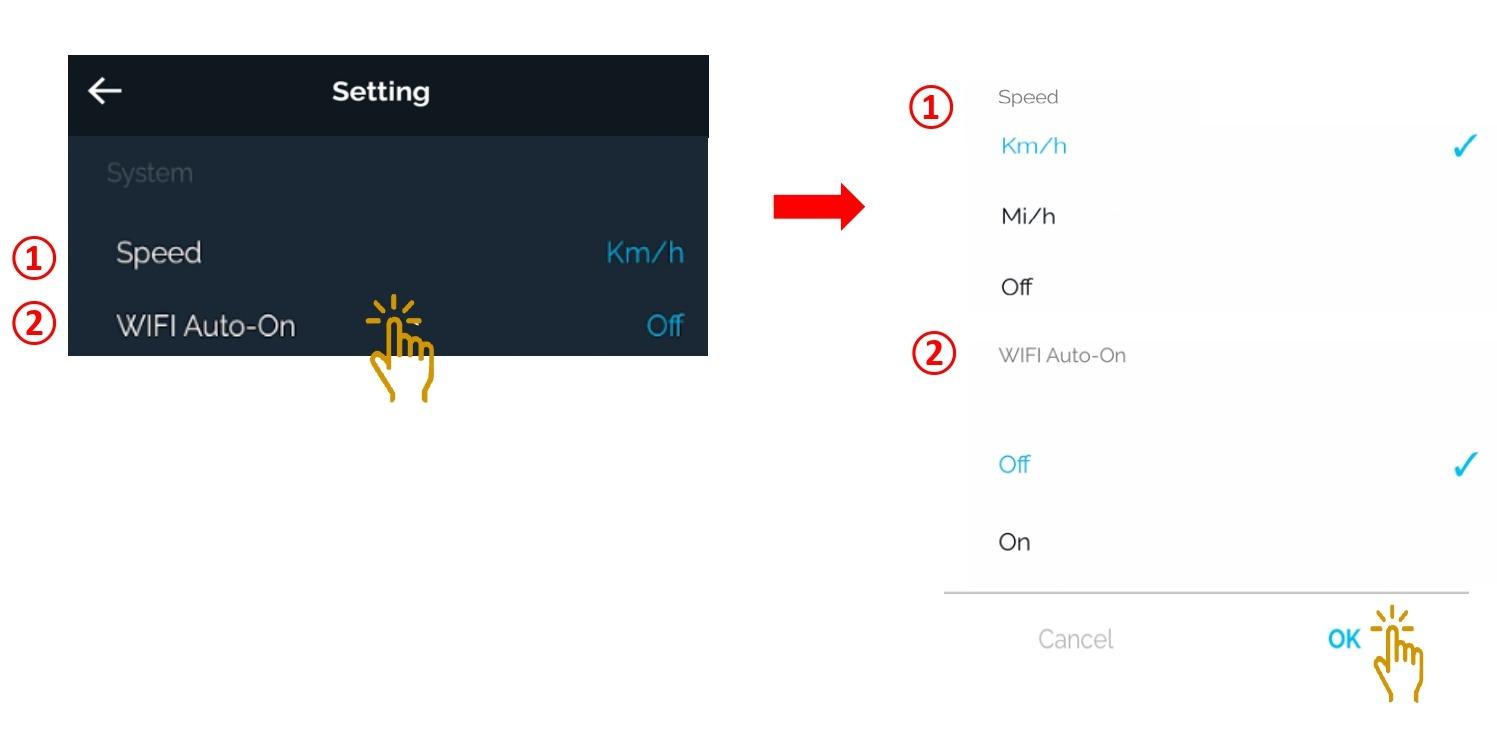
-
Speed - To capture the vehicle speed limit. It can be set to turn on "Km/h" , "Mi/h" or turn it "OFF"
-
WI-FI Auto-On - Once the Wi-Fi is set to Auto ON, whenever the dashcam starts, the Wi-Fi will be set to turn on.
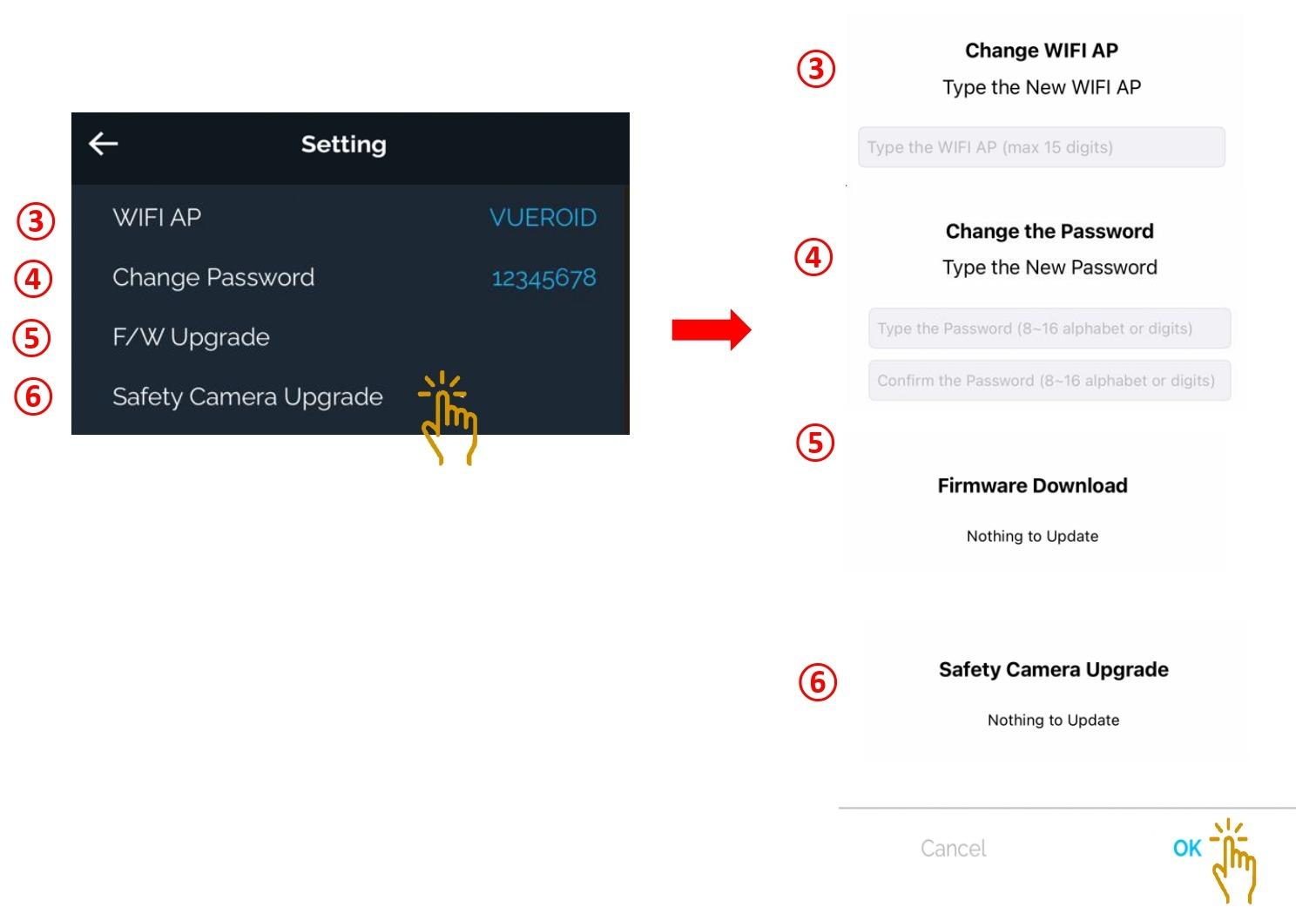
-
WI-FI AP - In the Wi-Fi network listing, click on the VUEROID dashcam SSID in the form of "VUEROID_D20_Q2_XXXXXX". Allow user to change the SSID naming.
-
Change Password - Password can be change with 8-16 alphabet or digits. Default password is "12345678".
-
F/W Upgrade - Any latest firmware will be notified and can be update.
-
Safety Camera Upgrade - Any latest safety firmware will be notified and can be update.

-
Information - Dashcam model and firmware version will be shown in the information.
-
Initialization - To reboot the dashcam back to factory default setting.
3.0 VIEW THE RECORDING (FILE VIEWER)
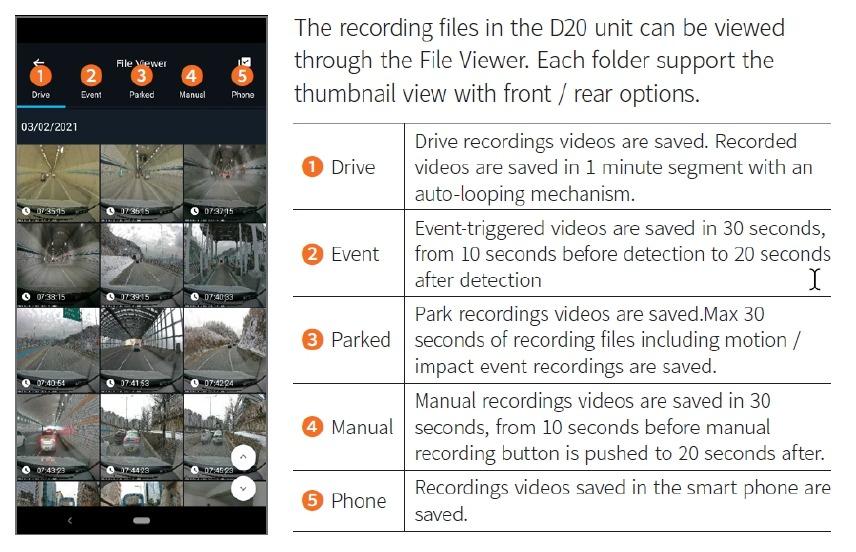

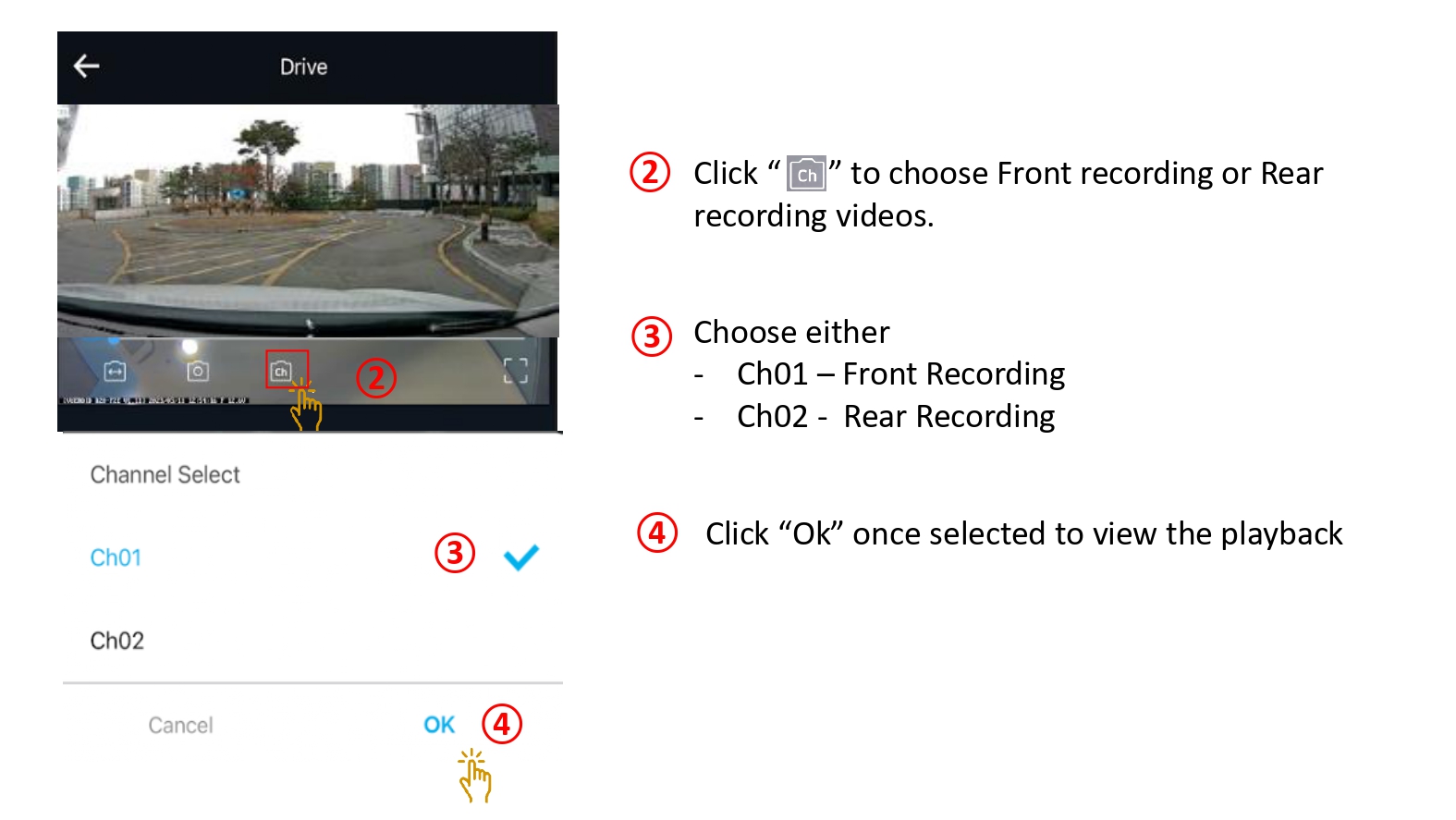
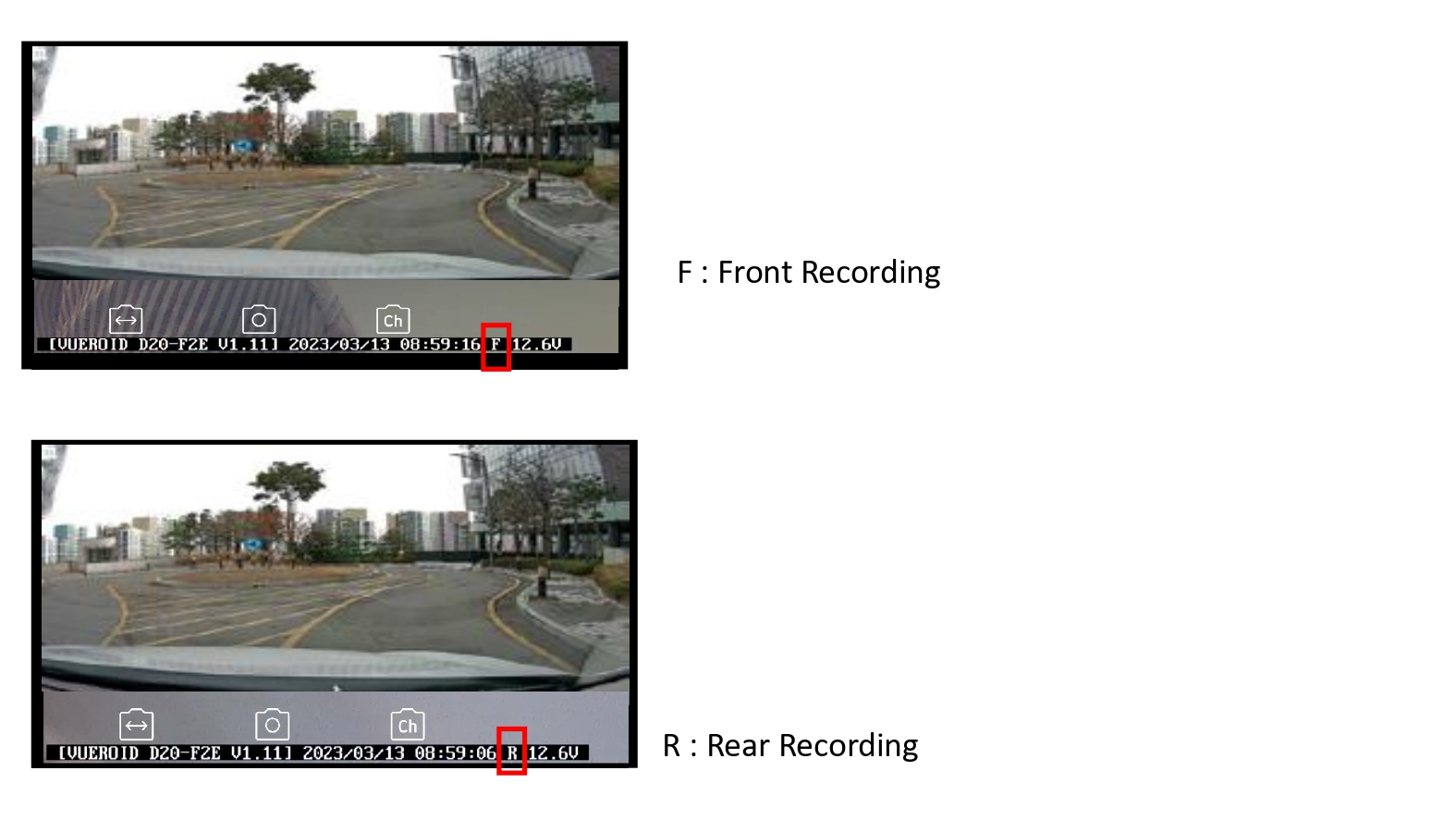
4.0 DOWNLOADING VIDEOS
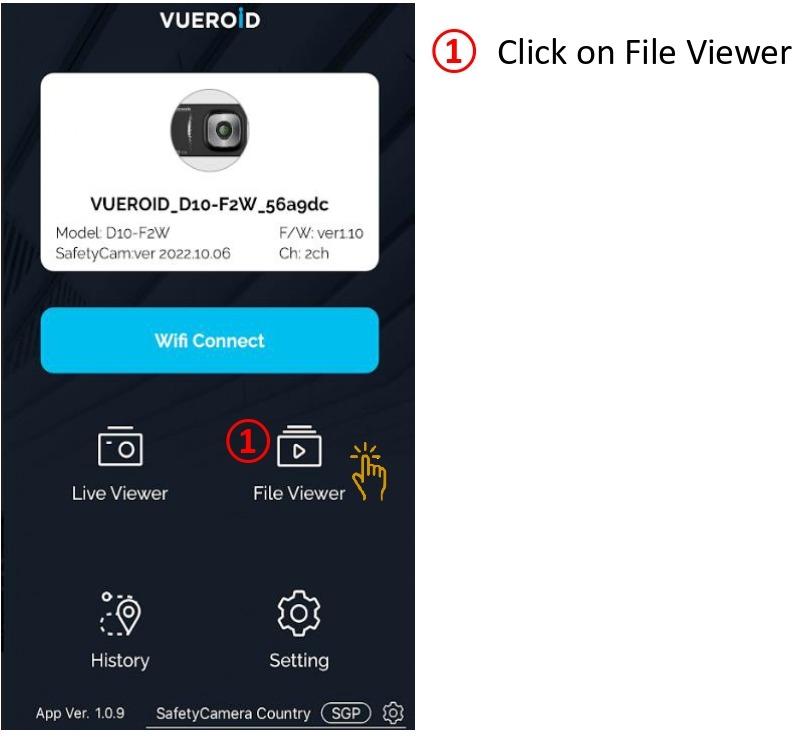
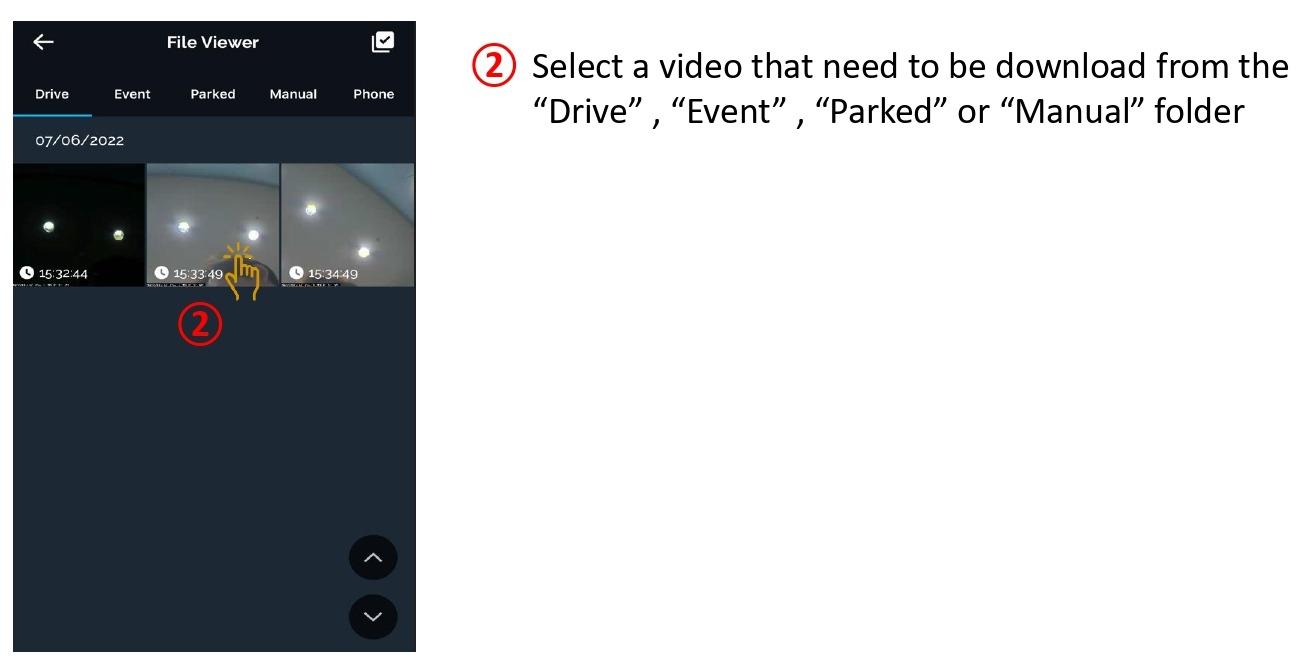
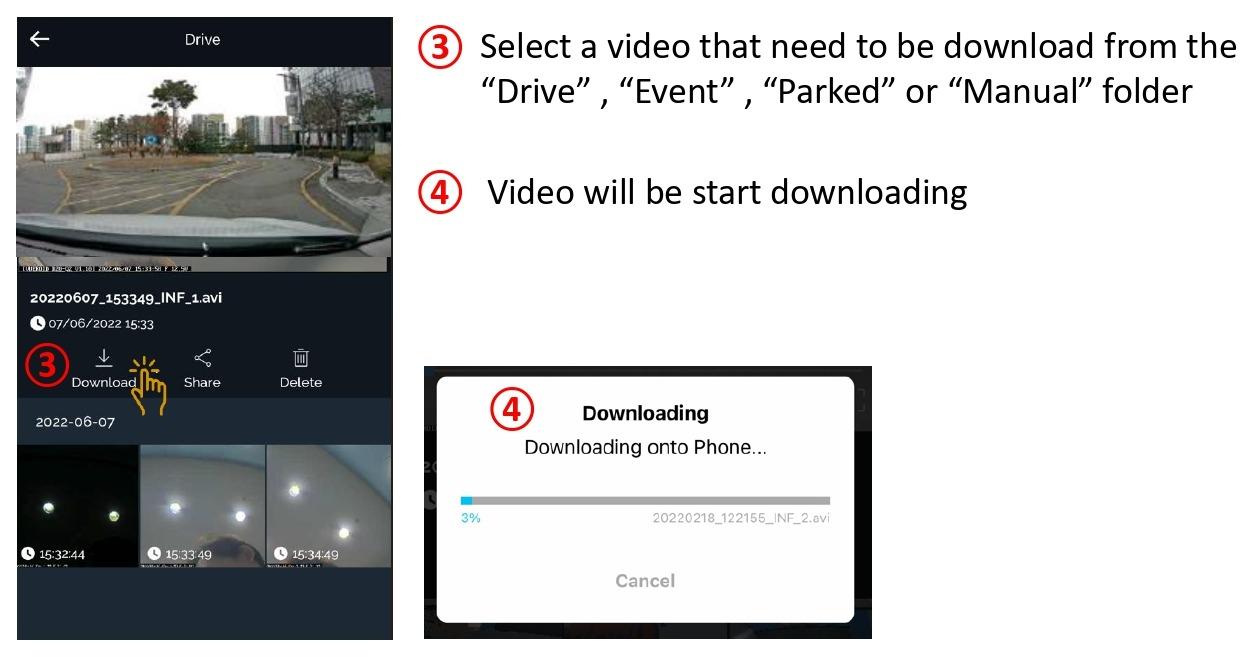

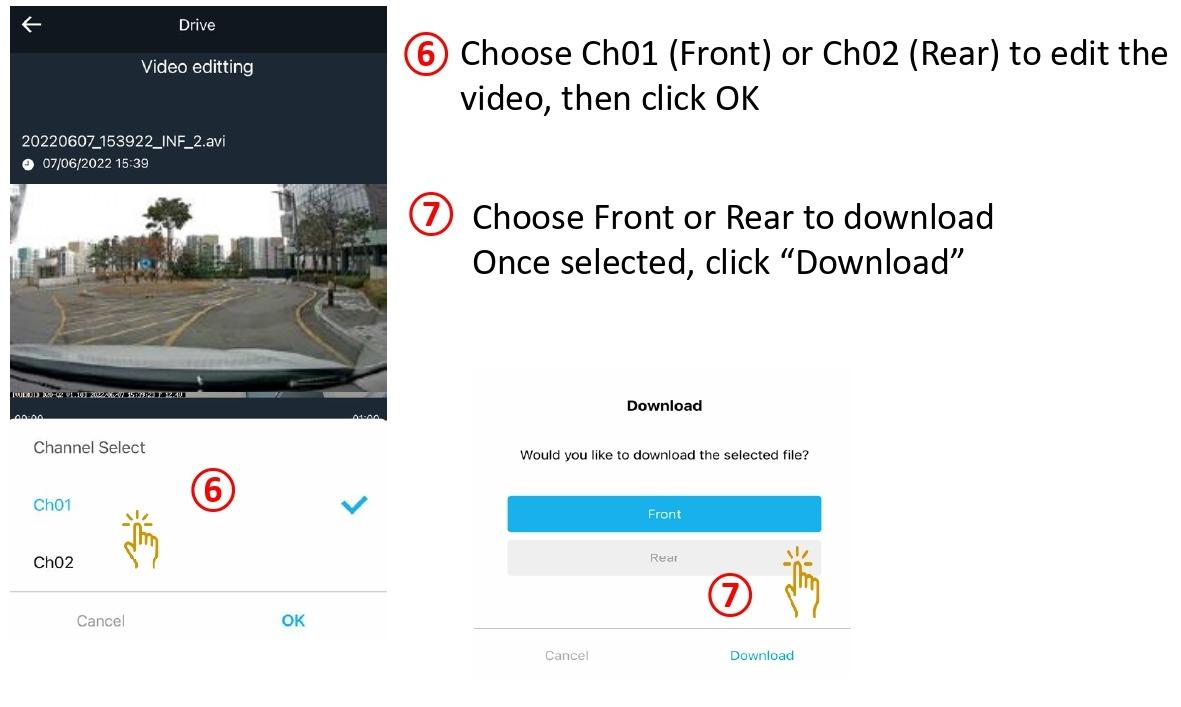
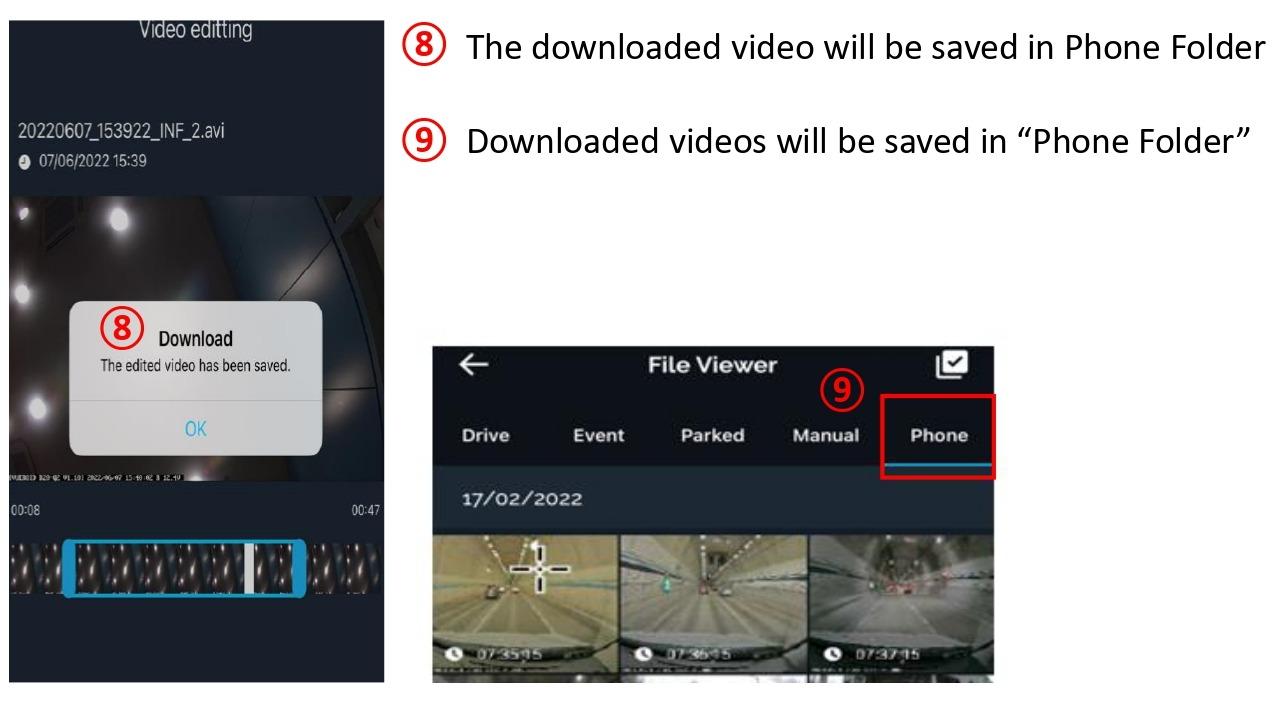
To save the downloaded videos to the user own phone library or to share, please continue to STEP 10

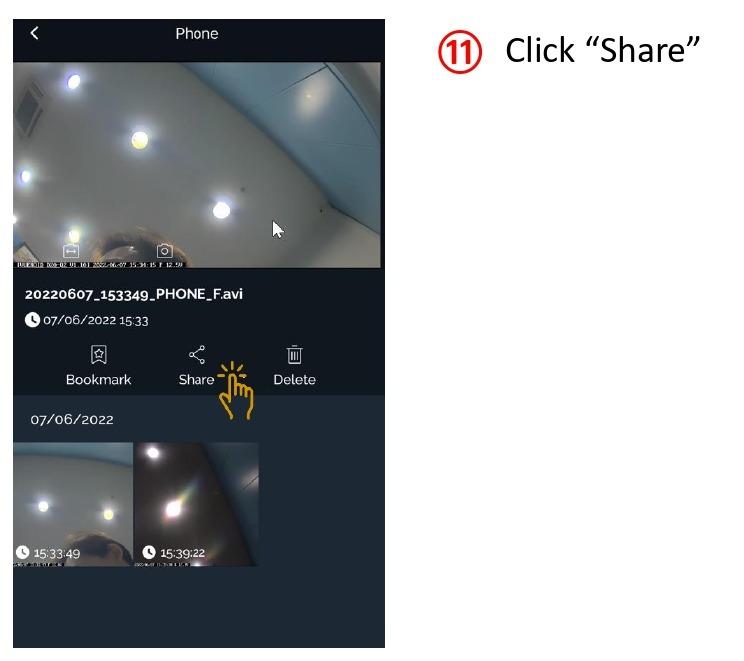



5.0 HISTORY
History is only applicable when purchase the Optional Add-On GPS Receiver.
Yours Itineraries can be safely stored in the History Menu so that you can access all your previous car rides.
Plus, Travel-log drive will help drivers or fleet managers to find a vehicle’s current Location using the VUEROID Mobile app.
Captured by the VUEROID Built-in antenna, the vehicle’s location, speed, and direction of travel is shown in the mobile app on a Google maps display.
It logs every trip you take and reports like mileage and trip time, as well as any impact events that might have occurred on the road.
